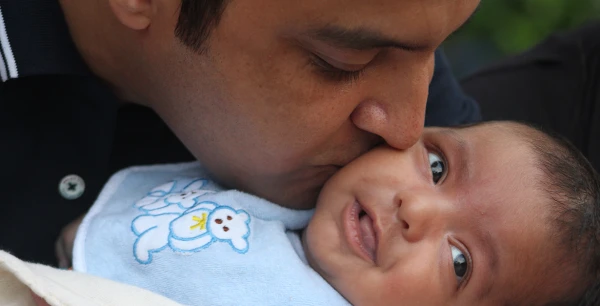 There aren’t many things that humble a person more than having a child. New parents quickly find themselves thrust into the world of on-the-job training, and “been-there-done-that” parents may realize that each subsequent child requires a different set of tricks and tools than their previous offspring did. Getting a baby to sleep is perhaps one of the steepest parental learning curves.
There aren’t many things that humble a person more than having a child. New parents quickly find themselves thrust into the world of on-the-job training, and “been-there-done-that” parents may realize that each subsequent child requires a different set of tricks and tools than their previous offspring did. Getting a baby to sleep is perhaps one of the steepest parental learning curves.
Please keep in mind that many sleep experts don’t recommend sleep training until a baby is six months old. That’s the age when babies become developmentally ready. Just like with any other milestone, an infant needs to be physically capable of sleeping independently. The skill depends on the ability to calm himself, as well as the brain maturation to consolidate and lengthen shut-eye into longer spans of time.
With that said, here are some gentle techniques that can help you secure a solid foundation for night sleep. When appropriately used, these tips can allow you a little more rest and continuity too.
A nap will help get your baby to sleep at night
Research repeatedly shows that “sleep begets sleep.” In other words, a well-rested child sleeps sounder and for longer stretches than an overtired one. Keep in mind that you can fill your baby’s sleep tank by any means necessary. Hold him, babywear him, stroll him around the block or take a car ride to get in those naps and prevent fatigue. Every minute counts. Frequent cat naps are better than no naps!
RELATED: Baby Sleep: Naps, Naps and Naps! How, When and Why!
Look for opportunities to bond during the day.
It’s completely normal and healthy for a baby to wake to eat in the middle of the night. However, some children may seek out a feeding session just to spend a little extra time with mom and dad, particularly if a parent has returned to work and the baby misses the snuggles. If this is the case, help promote more nighttime sleep by getting in the cuddles at a more convenient time.
Establish an early bedtime.
When I begin to work with new clients, this is often the first recommendation I make. It is very common that parents of young children underestimate the bedtime and put their babies to bed too late. An appropriate bedtime for the littlest ones is between 7-8 pm for many years. If your schedule permits it, err on the earlier side.
Create a soothing and consistent bedtime routine.
Choosing a short series of slow and quiet activities pre-bed creates a safe and predictable sleep association. These steps send subtle cues to the baby to help him relax and prepare for his longest stretch of sleep, which is usually bedtime until the first wake up.

Practice going down drowsy but awake (DBA).
If you play your parenting cards right, this will be the easiest time for a baby to practice putting themselves to sleep. A combination of all of the above makes this a prime opportunity. In the beginning, you’ll want to start with DBA. After you both are familiar with this, putting your baby down in an “awake and aware” state will help better reinforce and solidify the skill.
A lot of sleep experts believe that this is a significant step in encouraging your child to sleep independently. They have found that if a child can learn the skill at bedtime, the odds of it transferring to wake ups throughout the night are pretty darn good.
As with many long-term and worthwhile goals, consistency is imperative. Make a plan and stick with it for a few weeks for optimum results.


